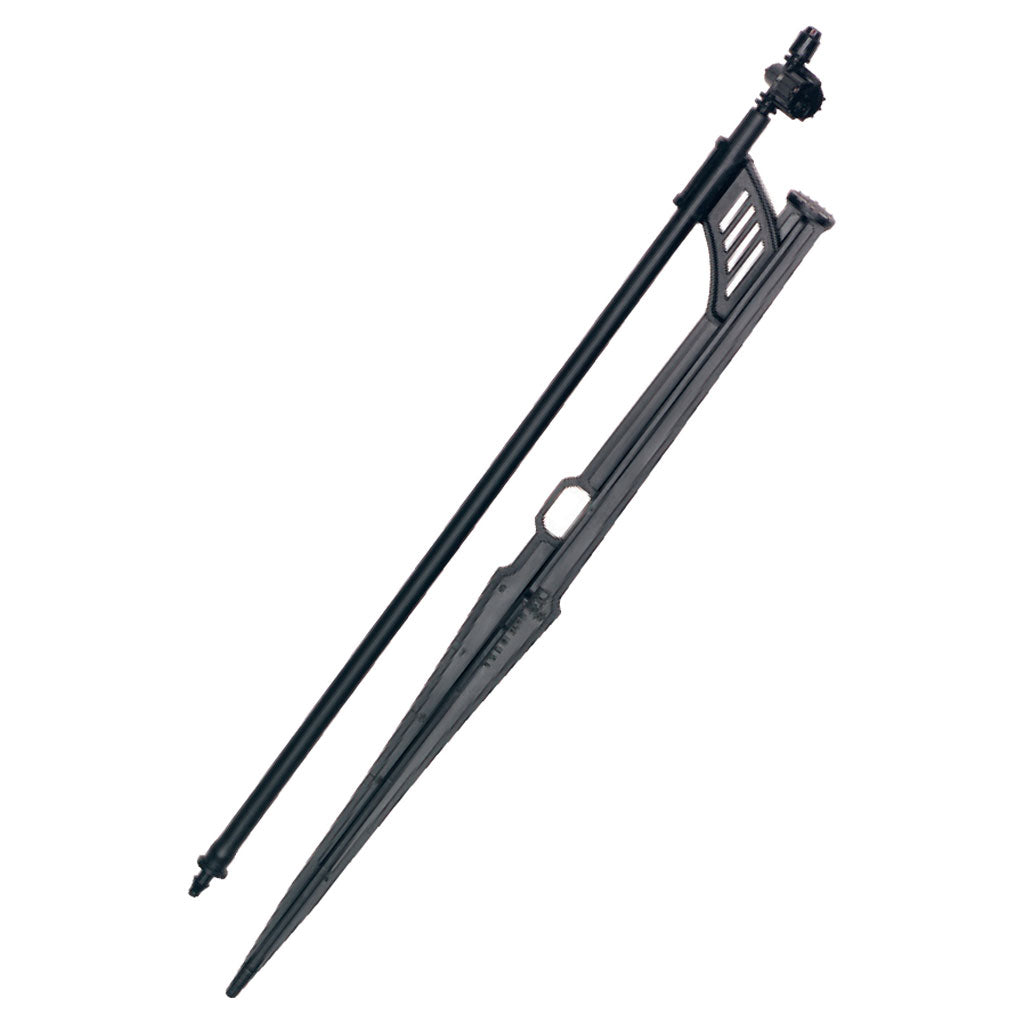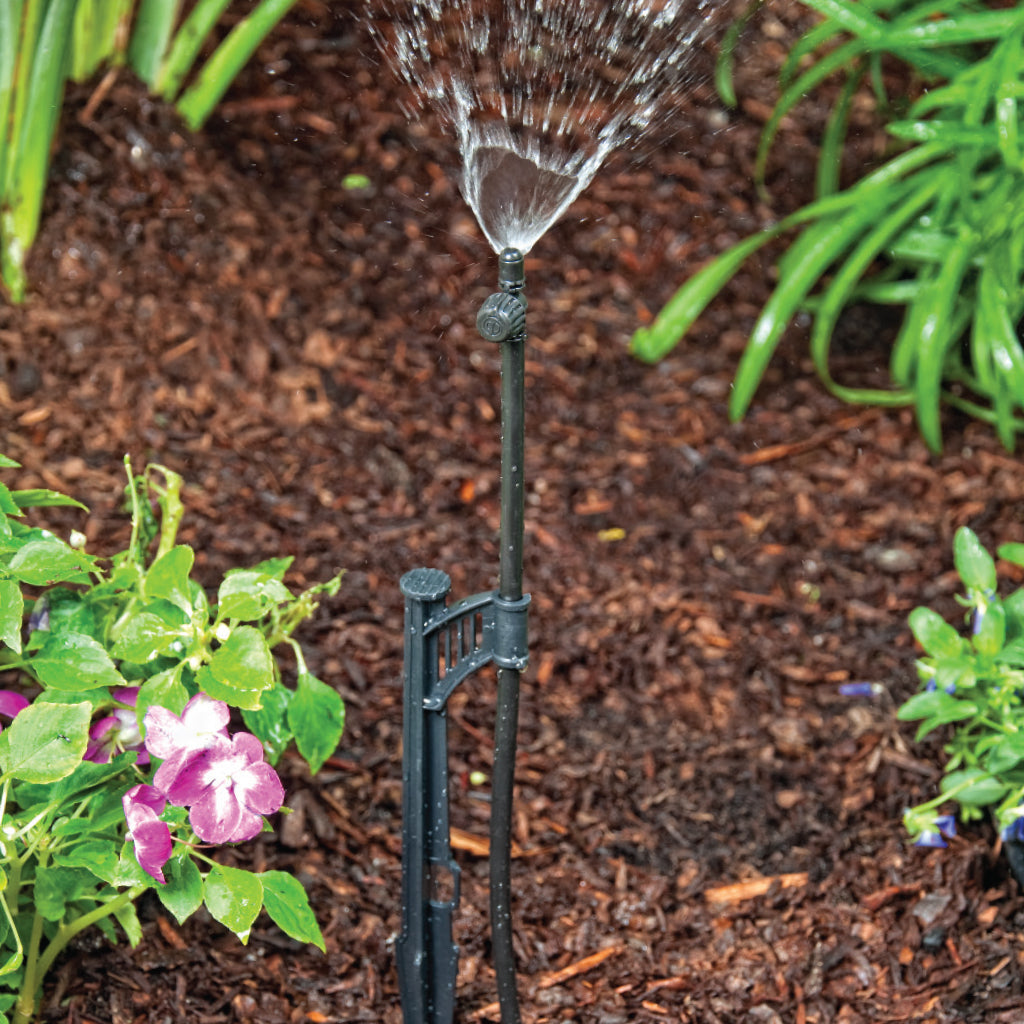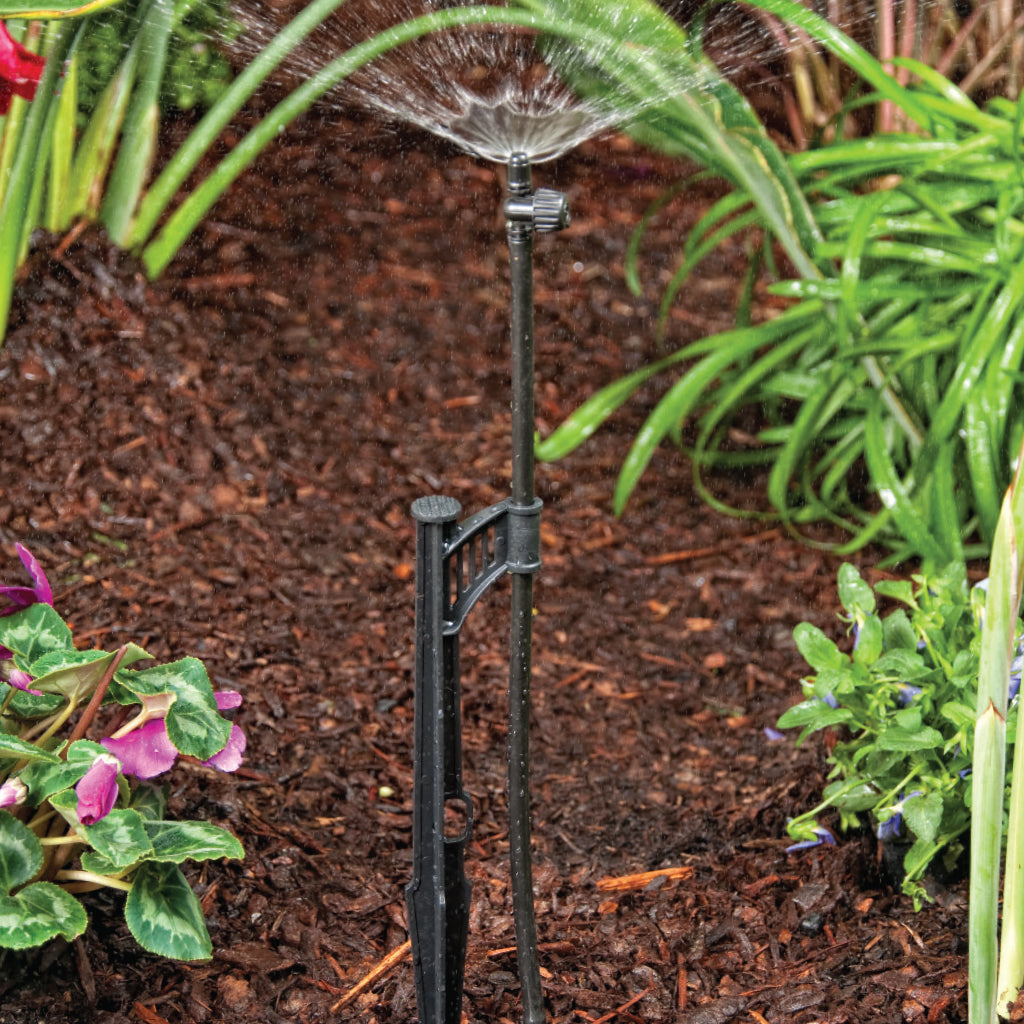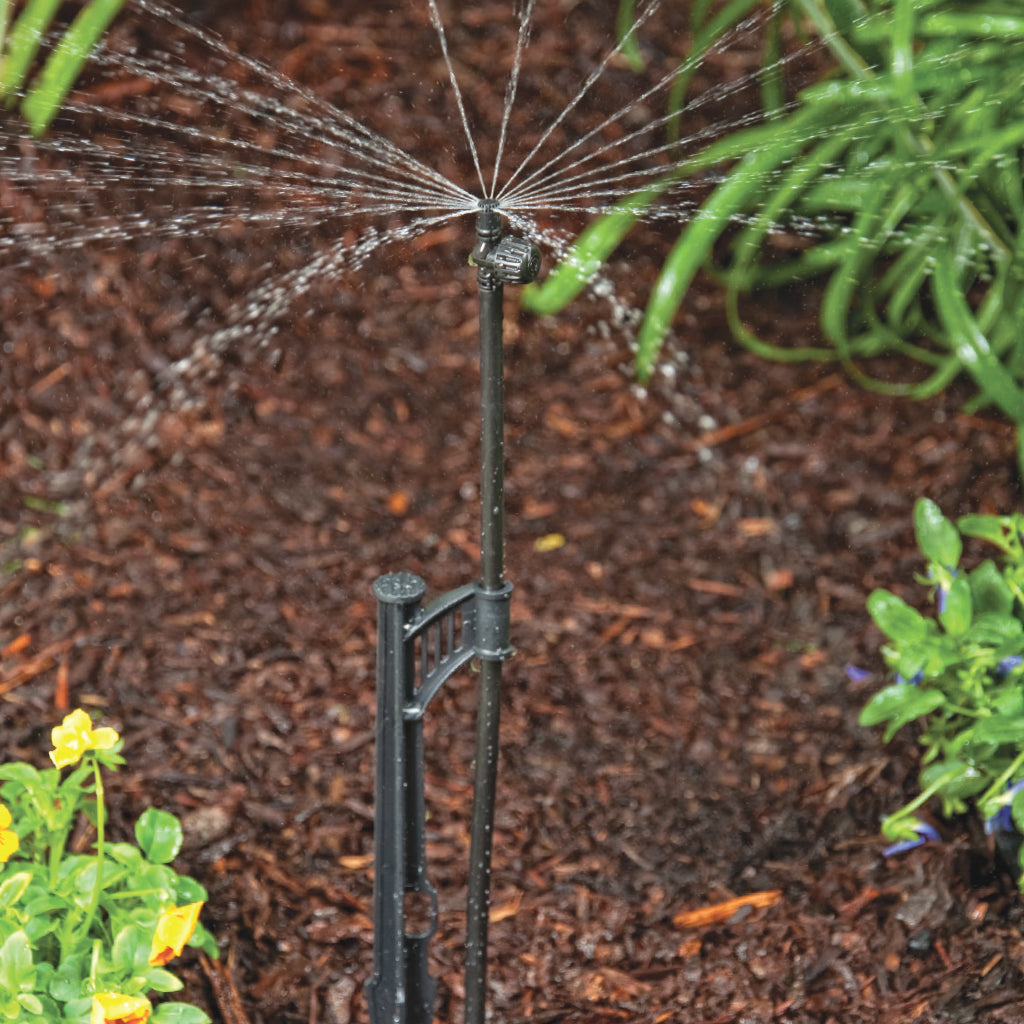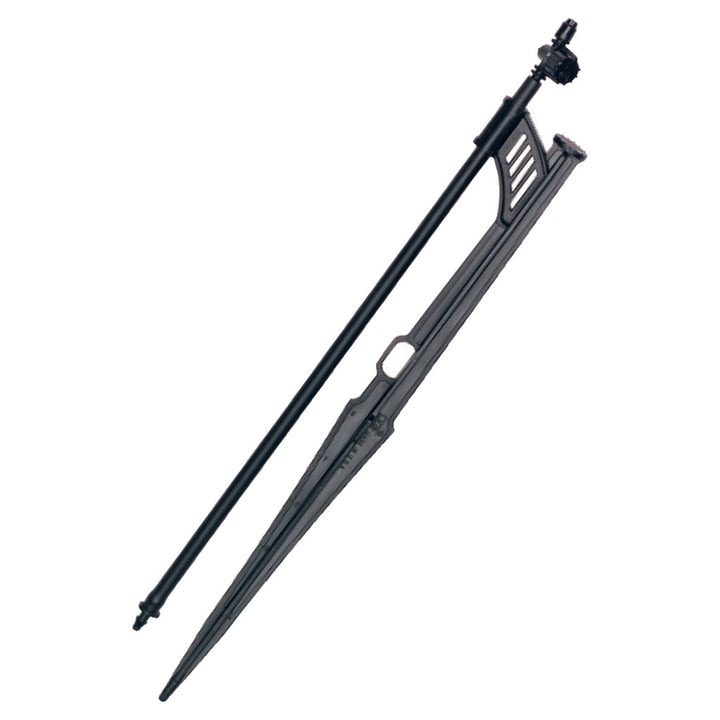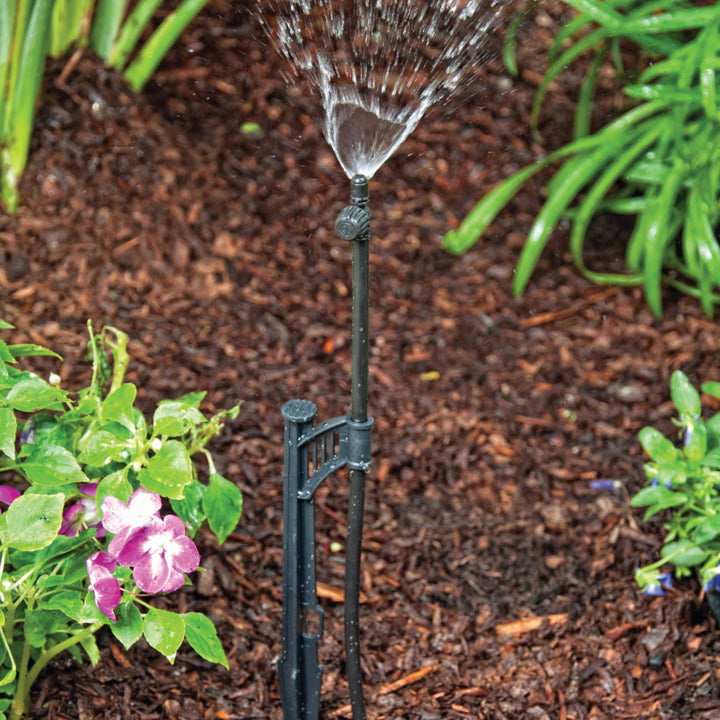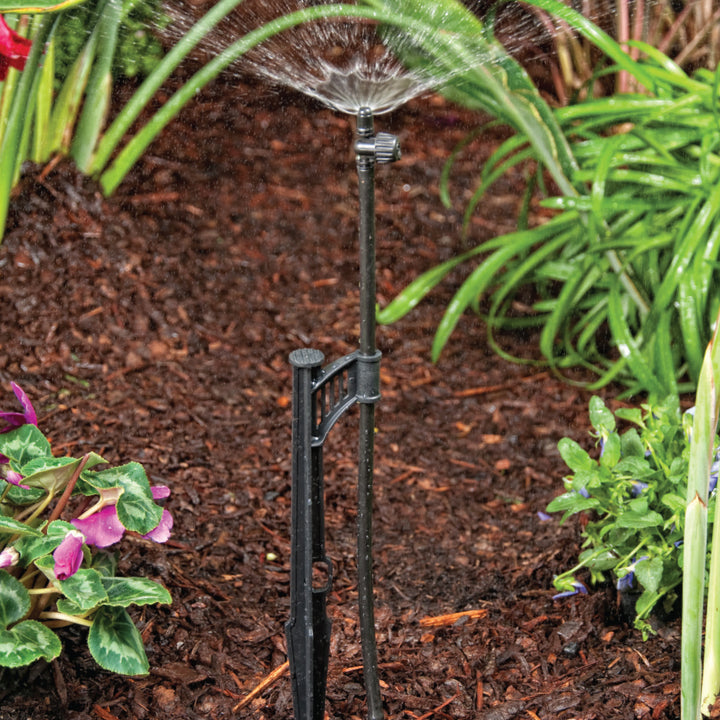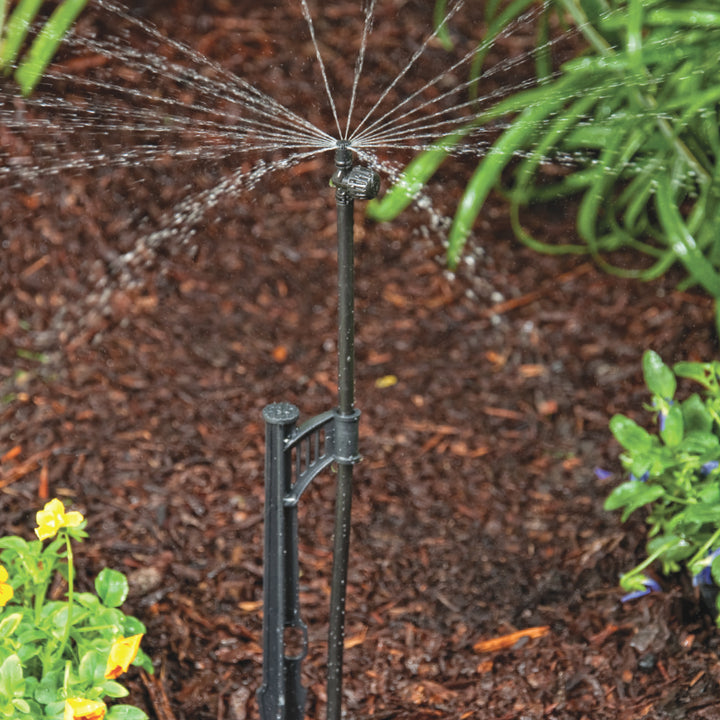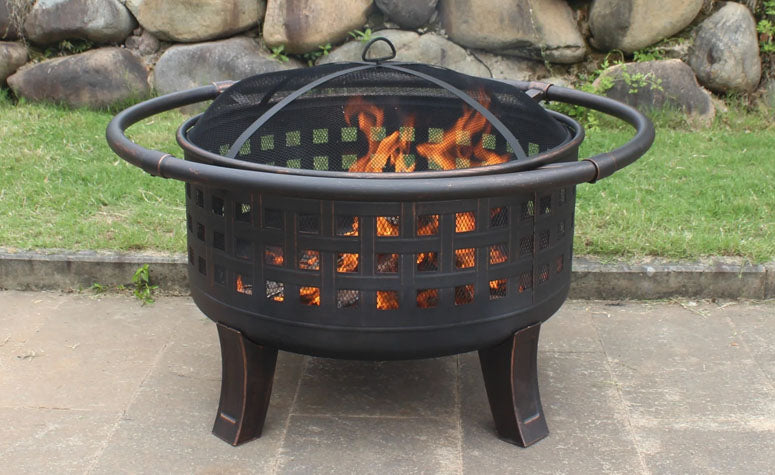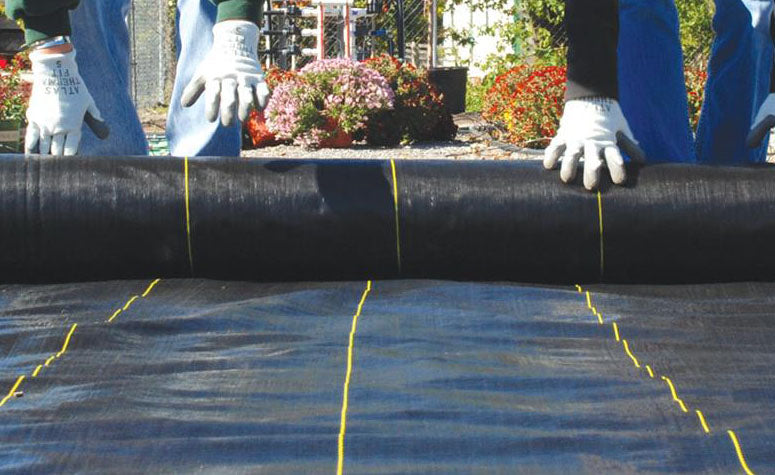DIG's Adjustable Micro Spray Jet Assemblies are available with three different spray patterns that include full, half and quarter circle. They have an adjustable flow feature of 0 to 26.1 GPH at 25 PSI. These micro sprayers have an adjustable knob that allows control of flow to reduce or increase the diameter or wetting area of the spray pattern. Used for residential gardens, flowerbeds, groundcovers, shrubs and trees, the adjustable micro sprayers are ideal for areas where low-flow overhead irrigation is desired or for areas where drip emitters or conventional sprinkler systems are not practical.
Features:
- Available in 90°, 180° and 360° diameter for individual plants or closely spaced plantings
- Recommended for flowerbeds, groundcovers, shrubs or for areas where low-flow overhead irrigation is desired
- Adjustable knob allows control of flow to reduce or increase the wetting area
- Available as a complete assembly on a 13" spike with a 12" PE riser and barb, or with 10/32 thread
- Efficient and reliable method to apply water
- Low flow with fine spray pattern
- Removable cap for easy cleaning
- Constructed of UV-resistant, durable plastic material
Product Specifications:
- Operating pressure range: 15 to 30 PSI
- Recommended operating pressure: 25 PSI (use with 25-PSI pressure regulator)
- Flow rate: 0 to 26.1 GPH @ 25 PSI
- Filter requirement: minimum of 80 mesh
- Recommended spacing: 8' to 12' apart
- Material:
- Stake: polypropylene
- 12" PE riser: polyethylene
- Micro sprinkler: high-impact plastic
How to Use
The Adjustable Micro Sprayers are available with full-, half- and quarter-circle patterns with an adjustable flow knob that allows flow control from 0 to 26.1 GPH at 25 PSI. The flow control's main feature is used to change the size of the wetting area with coverage that can reach up to a 10' radius and 21' full circle, depending on the assembly used and the height of the micro sprayers above ground. Using a PE riser extension, the height of the sprayer can be adjusted to fit taller plants and higher vegetation growth. The higher the position of the micro sprayers above the ground, the larger the wetted area will be. These micro sprayers are available with 10/32 thread or in a complete assembly with a 13" stake, 12" PE riser and 1/4" barb for added flexibility in the installation. Use the micro sprayers when overhead watering is suggested on any type of planting, including vegetation that requires moisture, groundcovers, flowerbeds or individual trees along the poly tubing. The recommended spacing is 8' to 12' between the adjustable spray heads or one per tree to a maximum distance of 78' to 108' in length when the flow knob is completely open, using 1/2" drip tubing as the main lateral.
Like micro sprinklers, micro sprayers and jets are available in a wide variety of styles, flow rates, diameters and configurations. Like micro sprinklers, they operate at low pressure and require a filter to protect the small orifice of the sprayers from clogging. The main advantages of the adjustable micro sprayers are the lack of moving parts and the capability to adjust the flow and change the wetting area. The micro sprayers are an efficient and reliable method to apply water. To cover densely planted areas, place the micro sprayers close together in rectangular or triangular spacing for good overlapping irrigation and better uniformity. Do not use the micro sprayers in windy areas as the micro sprayers' small size droplets can be easily dispersed in the air, even under low to moderate wind conditions, adversely affecting uniformity. The main advantage of low-flow micro irrigation is that a relatively large number of micro sprayers can operate simultaneously.
Installation suggestions
Basic installation recommendations for this product include first reviewing the area and then making a drawing of the garden or site with your preferred layout.
If automation is required, use one of DIG's hose end timers or battery operated controllers. The ideal controller should have flexible scheduling and two to four start times per day for added flexibility.
Start the installation from a PVC pipe or to pipe thread
- If the system installation is started from a PVC pipe, first shut off the main water supply.
- If an automated system is preferred, we recommend installing a 3/4" ball valve or gate valve before the battery operated controller or AC valve, if used. This ball valve can be very useful as an emergency backup to turn the system off. This type of arrangement is used by professional installers.
- Turn the water supply on to flush the line and then shut the water supply off using the new ball or gate valve.
- Install an AC valve or battery operated controller, wrapping TEFLON tape on all the male thread fittings used.
- Turn the water supply on again to pressurize the system. The unit will open momentarily and then will shut off.
- Test the valve or the battery operated controller and make sure that it is working correctly. If using a battery operated controller, program it. After the AC valve or battery operated controller, add a 3/4" screen filter with 155-mesh. The screen filter is used to protect the drip system. Next, add a preset 25 PSI pressure regulator or adjustable pressure regulator. The pressure regulator is used to lower the pressure to the suggested operating pressure for a drip system. Follow with a 3/4" swivel adapter to the drip tubing or 3/4" PVC thread x slip adapter to the PVC line.
Start the installation from a faucet or hose thread
- If an automated system is preferred, install a hose end timer.
- Test the hose end timer and make sure that it is working correctly, then program it. To the hose end timer, add a backflow device, then a 25 PSI pressure regulator and follow with a 3/4" swivel adapter with a screen. If water quality is a concern, we highly recommend using a fine mesh 3/4" filter with 155-mesh.
Product installation
- Using the drip irrigation tubing as the main lateral or sub lateral lay out the drip tubing per your layout drawing. Secure the drip tubing to the ground using stakes. Use the stake holders to secure the drip tubing to the ground in key areas and add more stakes as you unroll the drip tubing. Add stakes every 20'-30' and at the end of each section, or as needed. An extra 1% of drip irrigation tubing length should be added to each lateral to compensate for contraction at low temperature.
- Throughout the installation and per your drawing layout, add, if needed, 1/2" fittings, such as tees and elbows, leaving the end of the drip tubing open. To install the 1/2" compression drip fittings, cut the drip tubing with a hand pruner, being careful to keep dirt from entering the line. Hold the fitting in one hand and the drip tubing in the other and force the drip tubing into the compression fitting by wiggling it from side to side.
- The micro sprayers are installed along the drip tubing at varying or at specific intervals. The distribution uniformity of water from the micro sprayers along the line depends on the incoming pressure, number of micro sprayers used per lateral and the length of the laterals. Special care should be taken to ensure high uniformity of water along the laterals by not exceeding the product recommendations.
- To install the micro sprayers, use one of following suggested options:
- Option one: Cut a length of two to four feet of 1/4" micro tubing (not to exceed four feet). To the micro tubing end, insert a 1/4" barb. To the other end of the micro tubing, thread the micro sprayer and clip it to a clip stake. Insert the clip stake to the ground, keeping the micro sprayer head at a minimum of six to eight inches above ground for best coverage. Punch a hole into the drip tubing using the small punch or the gun punch, and snap the 1/4" barb at the end of the micro tubing into the drip tubing.
- Option two: To install the 10/32 thread micro sprayer, punch a hole in the upper side of the drip tubing using the small punch or the gun punch, snap the 1/4" barb at the end of the 6" PE riser assembly into the drip tubing and thread the spray head into the PE riser.
- Option three: To install the complete assembly micro sprayer, punch a hole in the side of the drip tubing using the small punch or the gun punch, snap the 1/4" barb at the end of the 24" micro tubing assembly into the drip tubing and insert the stake to the ground, keeping the micro sprayer head at a minimum of six to eight inches above ground for best coverage.
- Turn the water on and flush the line.
- Close the end of the drip tubing using the hose end or figure "8".
- Pressure-test the system to identify leaks in the drip tubing laterals, fittings and micro tubing, and then program the hose end timer or battery operated controller.




